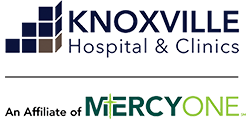Health maintenance organizations (HMOs) and preferred provider organizations (PPOs) are types of managed care health systems that employ a network of providers to treat the medical needs of their members. Today, most people get covered by one or the other, either individually or as part of a group plan through their employer. If you are given the opportunity to choose between HMO and PPO coverage, consider the following in determining which one best for you.
How are HMOs and PPOs alike?
Both HMOs and PPOs maintain a network of doctors, hospitals, medical labs, and independent physicians’ groups to provide and finance health care for members. Both attempt to reduce costs by applying specialized management techniques to limit what they regard as unnecessary medical procedures. They also share the goal of reducing health-care costs by focusing on preventive care and general health promotion. But there are several major differences, including the following:
Selecting a physician
HMO: When you join an HMO, you choose a primary care physician (PCP), who is your first contact for all medical care needs. Your PCP becomes the physician who directs what care you receive and by whom. HMO members must choose a PCP from among the HMO network physicians. If your longtime family doctor is not part of the HMO network, you’ll have to choose a new PCP.
PPO: PPO members do not have to choose a PCP and can refer themselves to any specialist in the network. You can even go to a physician outside the network, but you’ll pay a greater portion of the bill. So, although you’re covered for services both inside and outside the network, there is financial incentive to receive care from the plan’s preferred providers.
What if you need a specialist?
HMO: You must consult your PCP before you seek care from another network physician or specialist. This screening process helps to reduce costs for both the HMO and its members.
PPO: You are free to see any network specialist at any time. But if you go outside the network, your co-payment will run 30 to 40 percent of the physician’s charges. And if you fail to get permission from your PPO to see a non-network specialist, you could end up paying the entire bill.
Getting health care outside your network can be tough with an HMO
HMO: HMO members typically receive all treatment from their HMO network physicians. However, your HMO will pay for care provided by a non-HMO physician in an emergency. You should notify your PCP as soon as possible to coordinate the care. Non-emergency out-of-network care generally isn’t covered. But your HMO will pay for treatment when it is medically necessary and when the plan’s providers are unable to offer that treatment.
PPO: PPO members are not required to seek care from PPO physicians, but there are strong financial incentives to do so. For example, the PPO may reimburse 90 percent of the cost for care received within its network, but only 70 percent of the costs for non-network care. Most PPOs give full coverage for emergency treatment regardless of where it is performed and who provides it.
Co-payments are handled differently
HMO: Instead of deductibles, HMOs often charge a minimal amount, known as a co-payment, for each treatment or doctor’s visit. HMO members often pay a nominal co-payment of $5, $10, or $20 for office visits, tests, and prescriptions.
PPO: Instead of co-payments, a PPO usually has a coinsurance amount equal to a modest specified percent of the insurance company allowed for care inside the network and a higher percent for non-network treatment. Coinsurance percentages can vary significantly among PPOs. To avoid paying larger coinsurance amounts, most PPO members choose to receive all of their care within the PPO network.
HMOs typically have no deductibles
HMO: HMOs typically have no deductibles. Coupled with low co-payments, HMOs are able to minimize out-of-pocket costs. This is designed to encourage members to seek medical treatment early, before health problems become severe.
PPO: PPO coverage requires payment of an annual deductible. Once your expenses exceed the amount of this deductible, insurance coverage kicks in. After the deductible amount is met, the member is usually required to pay coinsurance, which is an amount equal to a modest specified percent of the insurance company allowed for care inside the network and a higher percent for non-network treatment. Both deductibles and coinsurance percentages can vary significantly among PPOs. To avoid paying larger coinsurance amounts, most PPO members choose to receive all of their care within the PPO network.
Annual payment caps
HMO: There is typically no limit on the amount of health-care costs in a given year. These costs are usually minimal co-payments, so your out-of-pocket expenses can be quite limited. But keep in mind that while some HMOs will cover specialized treatment from non-network physicians when the HMO itself doesn’t provide such treatment, others will not. You could end up paying for this treatment yourself. Talk to your insurance carrier or your employer’s plan administrator.
PPO: Health-care costs paid out of your own pocket (deductibles and coinsurance) are limited to an annual maximum. Typically, the out-of-pocket costs for network care are capped at a fixed amount. If you are treated outside the network, you’ll of course pay more. The maximum annual cap for non-network treatment can be twice the amount of network care.
So, which system is better for you?
Obviously, the choice depends on your particular needs. PPOs tend to be more flexible, but HMOs are generally less expensive. Because you don’t need to get a referral before seeing a specialist, you might prefer a PPO if you have a medical condition that requires specialized care. But if ongoing out-of-pocket costs are a major concern, an HMO may be a better choice–there are no deductibles, plus co-payments and coinsurance are typically lower. Contact your insurance company for a list of approved providers.

